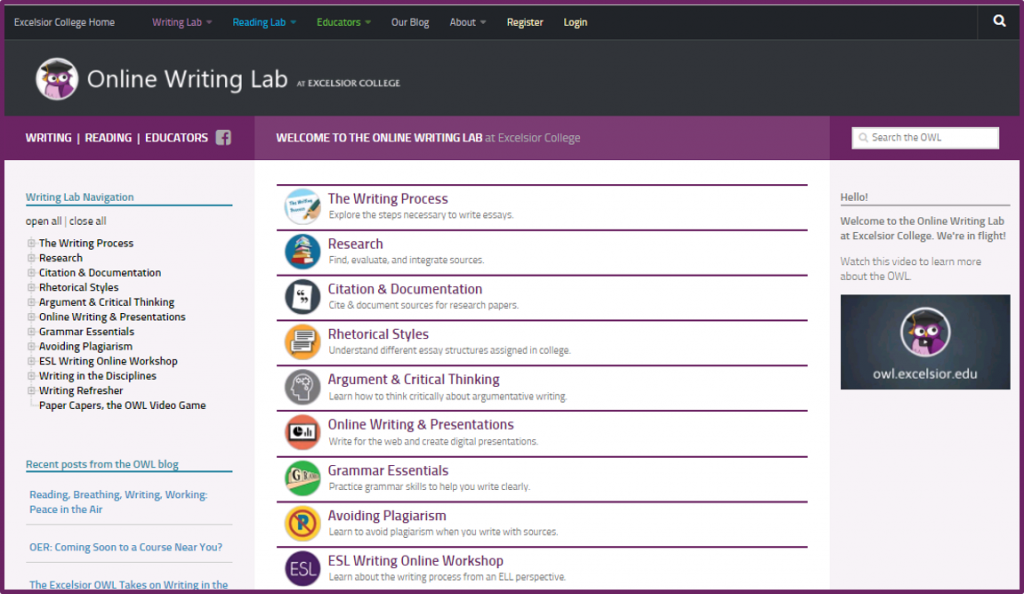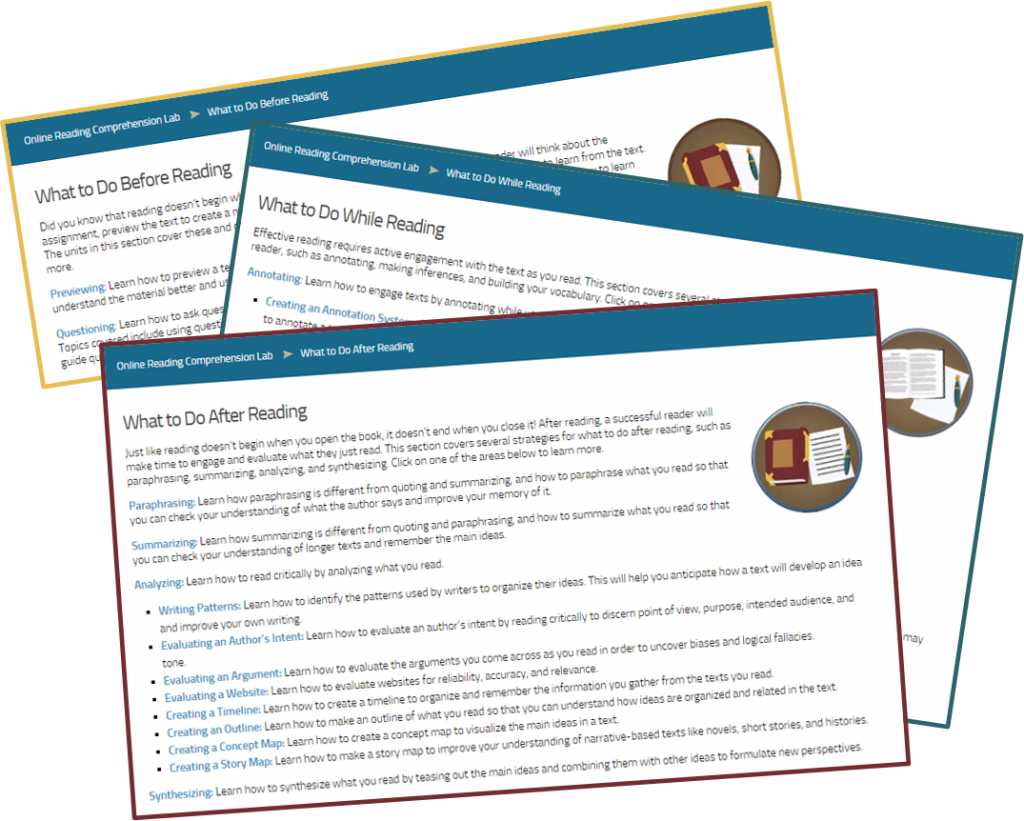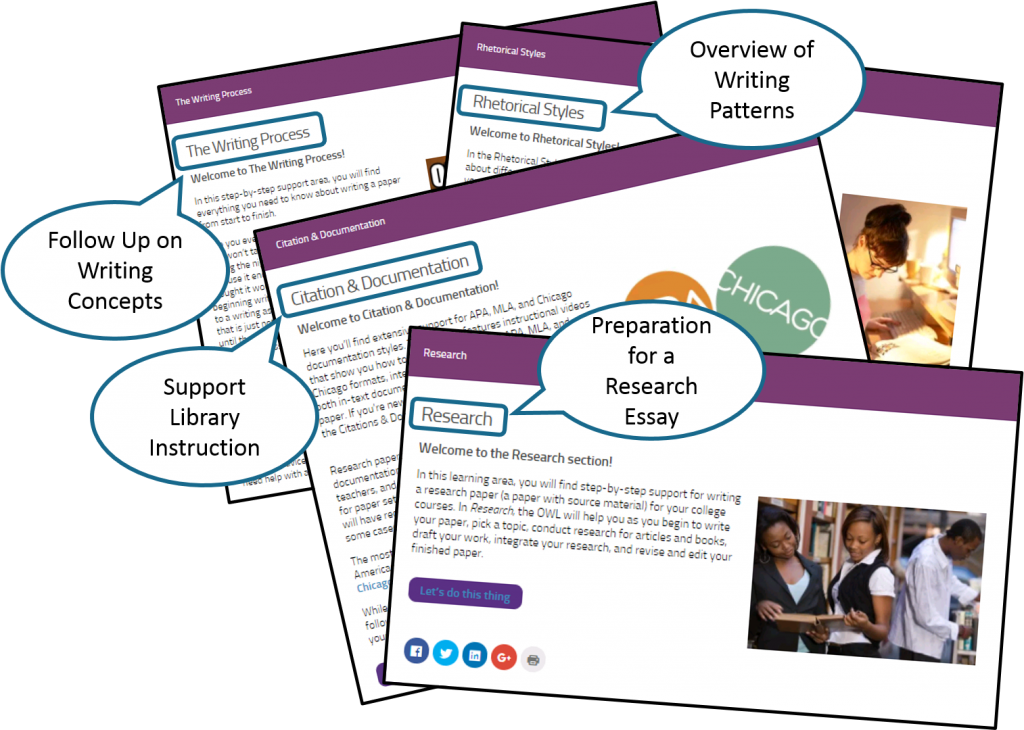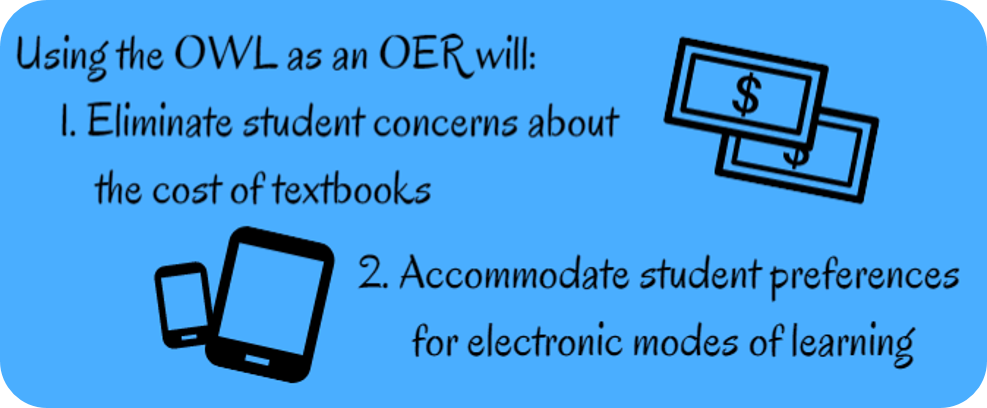Flipping Student Expectations with the OWL
by Eileen Hart
Deciding to use the Excelsior University Online Writing Lab (OWL) as an Open Educational Resource (OER) involves abandoning the comfortable confines of a structured textbook to explore the wide-open possibilities of a well-designed online resource.

I began using the OWL, rather than a textbook, for a spring-semester section of Enhanced College Writing, a for-credit course designed for students who have been identified as needing developmental support. Each class is limited to twelve students who are scheduled for an additional hour of lab time each week. In this first trial, I simply assigned the OWL webpages that supported the learning objectives for each class meeting. Although students responded well when I used the OWL website to discuss concepts in class, the students resisted using the OWL to do any reading “homework.” Instead, they expected that I would read, explain, and help them take notes on what I wanted them to know.
 For the fall semester, I decided to flip student expectations. Rather than substituting the OWL for a textbook, I decided to fully integrate the OWL resources to engage students in meaningful collaborative learning that supports academic competence and confidence. To engage students in developing the reading and writing skills that they will need to achieve their college and career goals, I changed the weights of course assignments and added a hefty Daily Participation grade. Students earn one point for completed written “homework,” including summaries of assigned readings; two points for class participation, including discussion and/or presentations of assigned reading information; and one point for being on time and in class all period.
For the fall semester, I decided to flip student expectations. Rather than substituting the OWL for a textbook, I decided to fully integrate the OWL resources to engage students in meaningful collaborative learning that supports academic competence and confidence. To engage students in developing the reading and writing skills that they will need to achieve their college and career goals, I changed the weights of course assignments and added a hefty Daily Participation grade. Students earn one point for completed written “homework,” including summaries of assigned readings; two points for class participation, including discussion and/or presentations of assigned reading information; and one point for being on time and in class all period.
Having created this incentive for student engagement, I enthusiastically began to revise my course assignment calendar. When I opened the OWL, I instantly noticed the Reading Lab. The content not only explains different reading strategies for different purposes, it also explains how to go from reading content to recording concepts—including information on critical questioning of sources. I decided that I would try to fit this into the first few weeks of the course. It would allow my students to refresh knowledge and introduce concepts. The “What to Do Before Reading” section guides students to approach reading as an active task. “What to Do While Reading” explains the important skills required for active, engaged reading. “What to Do After Reading” takes the students smoothly into writing about reading.

The Reading Lab would provide excellent grounding for my first-semester college learners. From there, I aligned OWL content with the learning objectives and assignments for the rest of the course. The “Writing Process” would follow up the writing concepts introduced in the reading section. “Rhetorical Styles” would provide an overview of writing patterns to guide student essays. “Citation & Documentation” and “Research” segments would support the library instruction and research activities to help students prepare for their research essays.

By using the OWL resources, I created a plan for a better progression of skill development so that students would effectively apply critical reading to enhance the clarity of their oral discourse and written compositions.
 I am looking forward to implementing my plan in the fall semester. Using the OWL as an OER will not only eliminate student concerns about the cost of textbooks, it will also accommodate student preferences for electronic modes of learning. Based on my experience from last semester, I expect that students will better understand concepts that are clearly presented in concisely composed webpages supported with videos, Prezis, and student writing examples.
I am looking forward to implementing my plan in the fall semester. Using the OWL as an OER will not only eliminate student concerns about the cost of textbooks, it will also accommodate student preferences for electronic modes of learning. Based on my experience from last semester, I expect that students will better understand concepts that are clearly presented in concisely composed webpages supported with videos, Prezis, and student writing examples.
When the fall semester has concluded, I will share my reflections on integrating OWL resources in Enhanced College Writing.
Eileen Hart is an Assistant Professor of English at Herkimer Community College and a member of the OWL National Advisory Board.
